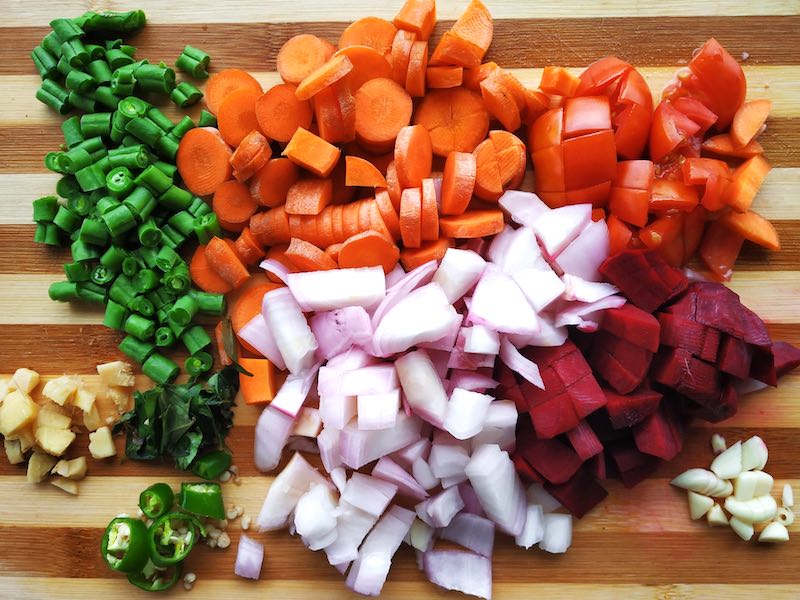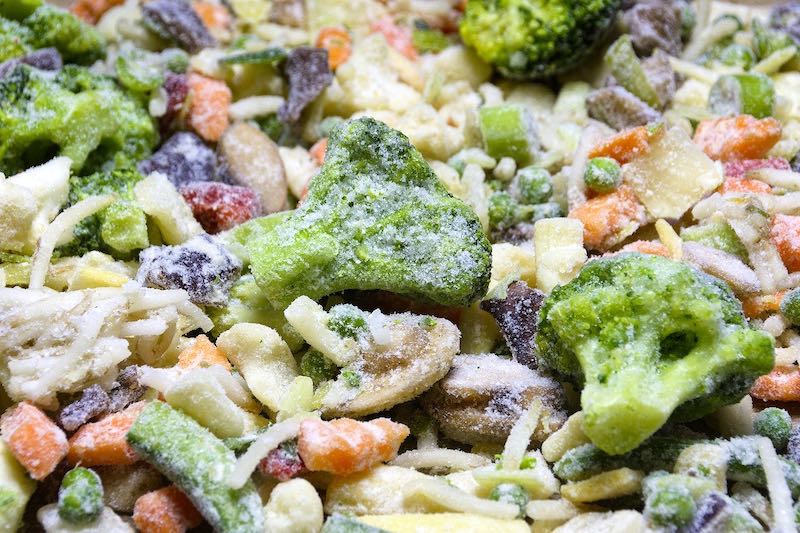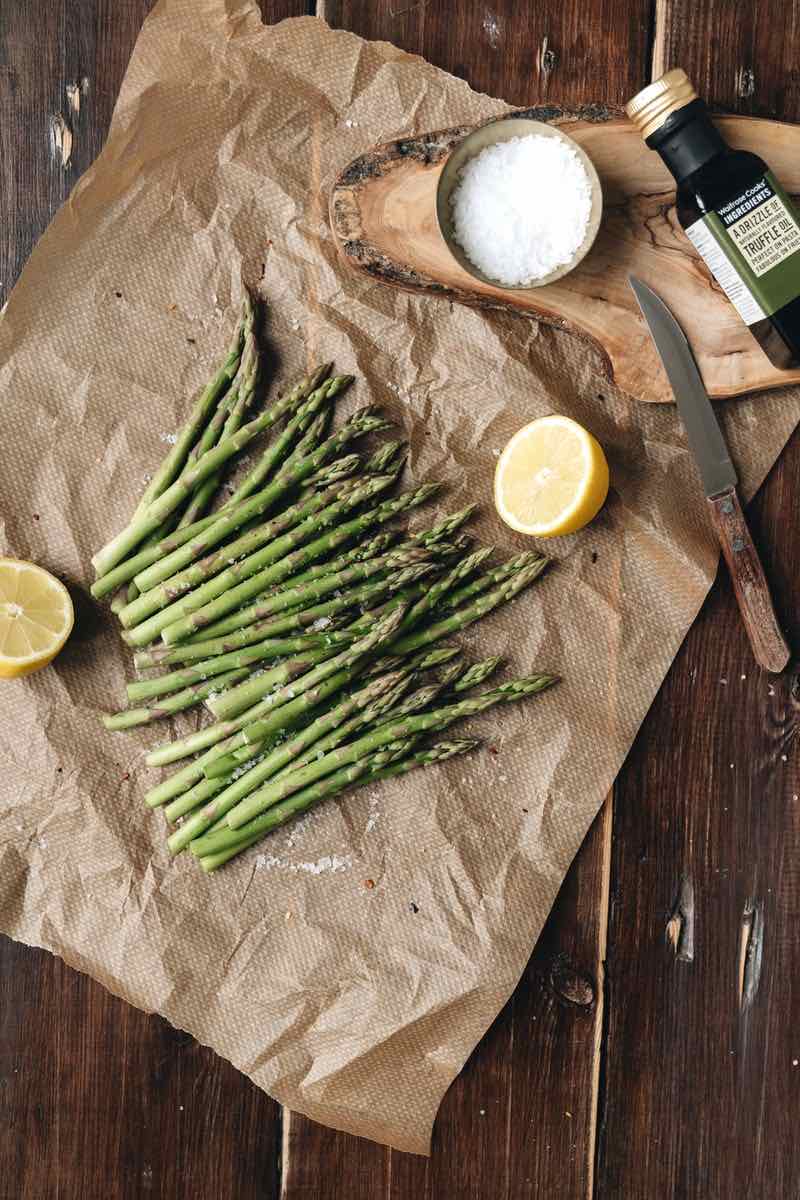Do you know how to freeze vegetables properly? Knowing the proper way to preserve the freshness and prolong the lifespan of your foods is very important, especially during a pandemic where food sources are limited.
RELATED: Freezing Herbs with Olive Oil for Long Lasting Flavor | How to Freeze Basil
Everything You Need to Know on How to Freeze Vegetables
Fast Facts on How to Freeze Vegetables

Before we get started, here are some quick facts on freezing vegetables:
- You can store vegetables in the freezer for as long as 18 months. Fruits, on the other hand, have a shorter lifespan ranging around one year.
- Set the freezer to no higher than 0 degrees Fahrenheit.
- Make sure to squeeze out as much air as you can out of the freezer bags.
- Timestamp the freezer bags. It should be labeled with the date you first stored the veggies in the freezer.
- Always blanch the veggies before freezing them. Doing so will ensure your veggies stay rich and flavorful even after a year of storage.
Step-by-Step Guide on How to Freeze Vegetables
Step 1: Prepare the Veggies

The first thing you need to is prepare the veggies. Wash the veggies thoroughly in running water to remove any dirt or bacteria lurking on the surface. Then, cut them into small pieces.
Step 2: Blanch the Veggies

Blanching your veggies before freezing them is a great way to retain the color, flavor, and nutrients of your crops. So don't forget to do this step!
Basically, the process involves boiling your veggies in hot water for around five minutes and then dipping them immediately in a bowl of ice water. Pat them dry afterward then spread them out on a baking sheet.
Step 3: Freeze the Veggies Solid

Freeze the veggies solid overnight. If the baking pan does not fit your freezer, you can opt to place the veggies in a large bowl.
Try to spread them out as much as you can. Bundling them together will make the veggies freeze unevenly.
Step 4: Seal in Freezer Bags
After freezing the veggies solid, take them out then store in separate airtight freezer bags. This will prevent them from coming in contact with outside air. Once you are done, store the veggies back in the freezer.
Pro Tip: Do not store veggies in an overloaded freezer. Exposing your veggies to different kinds of foods will ruin the way it looks and tastes.
Step 5: Store and Consume When Needed
Follow these steps properly and you'll be able to preserve the freshness of your veggies for as long as 18 months. Storing them in the freezer is not necessarily bad, but the quality of your veggies is sure to decline.
Pro Tip: If you plan to store multiple bags of frozen veggies, invest in a new freezer. That way, you can freeze all the veggies you want without sacrificing freezer space for other kinds of foods.
RELATED: Survival Seeds Storing Techniques For Homesteading
How to Freeze, Blanch, and Prepare Different Kinds of Vegetables
1. Cauliflower and Broccoli
Microwave Reheating Time: 2 to 4 minutes
Steaming Reheating Time: 2 to 4 minutes
Blanching Time: 3 minutes
Broccoli and cauliflower are both crunchy, juicy, delicious veggies that pair well with different kinds of meat. They are great alternatives to high-carb foods such as bread, potatoes, and rice.
To prepare them for freezing, wash each head thoroughly then cut them into multiple one-inch florets.
2. Bell Pepper
Microwave Reheating Time: 1 to 2 minutes
Steaming Reheating Time: 2 to 3 minutes
Blanching Time: 2 to 3 minutes
Bell peppers are crunchy, spicy veggies you can use to add an extra kick to your meals. They go great with steak meals, kebabs, grilled chicken, and salads.
To prepare them for freezing, wash each pepper thoroughly, slice them open, remove the seeds, then cut the peppers into multiple one-inch slices.
3. Asparagus

Microwave Reheating Time: 1 to 2 minutes
Steaming Reheating Time: 2 to 3 minutes
Blanching Time: 2 to 3 minutes
Asparagus is a delicious veggie with a strong earthy, leafy flavor. It goes well with thick, savory meats such as bacon, ham, and steak. Many people say that asparagus reminds them of broccoli or cauliflower.
To prepare for freezing, wash the asparagus spears thoroughly then trim the woody ends.
4. Corn
Microwave Reheating Time: 1 to 2 minutes
Steaming Reheating Time: 2 to 3 minutes
Blanching Time: 2 minutes
Corn is a versatile vegetable that you can grill, steam, fry, or bake. Each kernel has a sweet, juicy flavor that complements grilled meat cuts such as beef and chicken. In fact, grilled corn is a staple at any cookout.
You need to husk and remove the kernels from the cob before storing corn in the freezer.
5. Carrot
Microwave Reheating Time: 2 to 4 minutes
Steaming Reheating Time: 4 to 6 minutes
Blanching Time: 2 to 3 minutes
Carrots have a sweet, crunchy, earthy flavor that makes them one of the most versatile veggies on this list. You can pair them with grilled meat, shred and mix them with leafy greens, or even bake them into cakes or bread.
To prepare for shredding, wash each carrot thoroughly, peel the skin off, then slice 1/4-inch cubes.
6. Brussels Sprout
Microwave Reheating Time: 2 to 4 minutes
Steaming Reheating Time: 4 to 6 minutes
Blanching Time: 2 to 3 minutes
Brussels sprouts are deliciously earthy and crunchy veggies that go well with pasta. Sauté them in salt and olive oil then mix in your favorite pasta dish.
To prepare for freezing, cut off the outer leaves, trim the stems, then cut the larger pieces into half.
7. Spinach
Microwave Reheating Time: 1 to 2 minutes
Steaming Reheating Time: 2 to 3 minutes
Blanching Time: 2 to 3 minutes
Spinach is a delicious veggie you can eat on its own or mix with cream-based dishes. Its earth, leafy flavor blends well with creamy, milky meals such as carbonara and grilled chicken with white sauce, among others.
To prepare for freezing, get rid of any woody stems and chop it however you want.
Check out this video by Hyderabadi Ruchulu for a step-by-step visual guide on how to freeze vegetables properly:
Overall, knowing how to freeze vegetables is a very important skill that will help you preserve the freshness of your crops. As we said earlier, keeping your crops edible is a must, regardless of whether there’s a pandemic or not.
Also, find out which veggies do not freeze well. Think twice before you store vegetables with high water content such as melons, celeries, lettuce, cucumbers, and radishes. If you freeze them for too too long, they’ll become soggy afterward.
Did this guide help you better understand how to freeze vegetables? If you have any questions, feel free to post them in the comments section below!
Fellow homesteaders, do you want to help others learn from your journey by becoming one of our original contributors? Write for us!
Up Next:

Leave a Reply